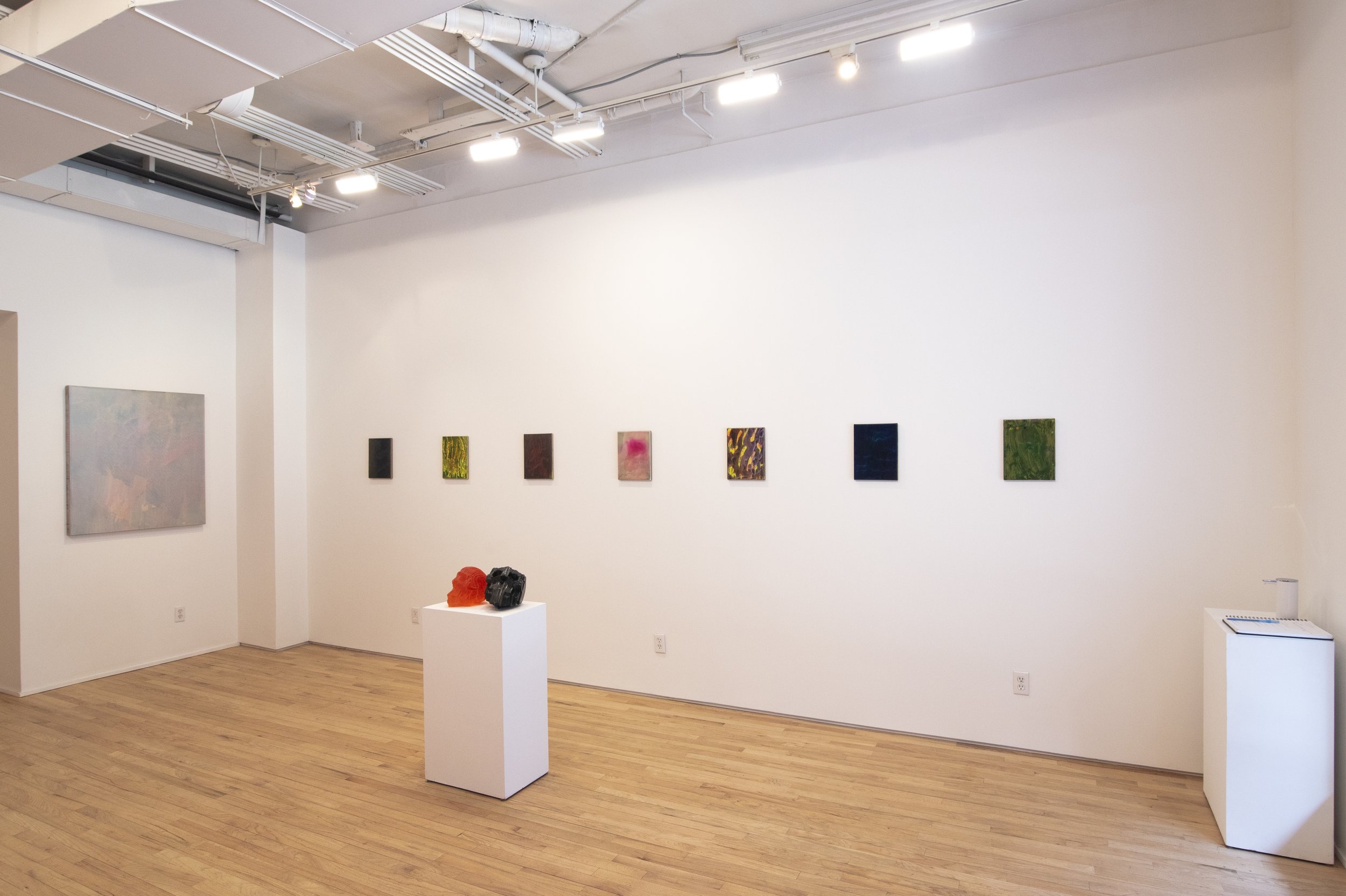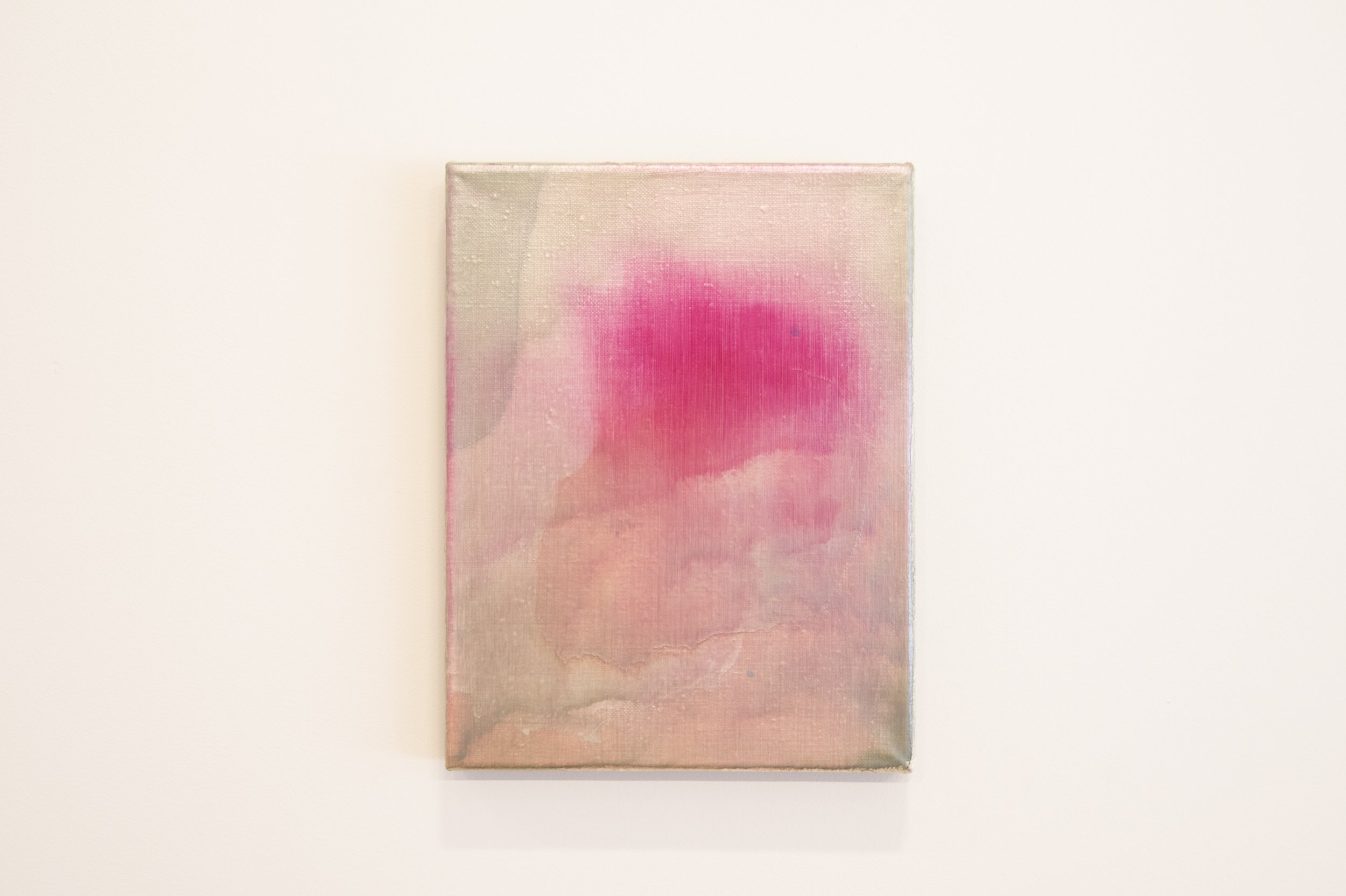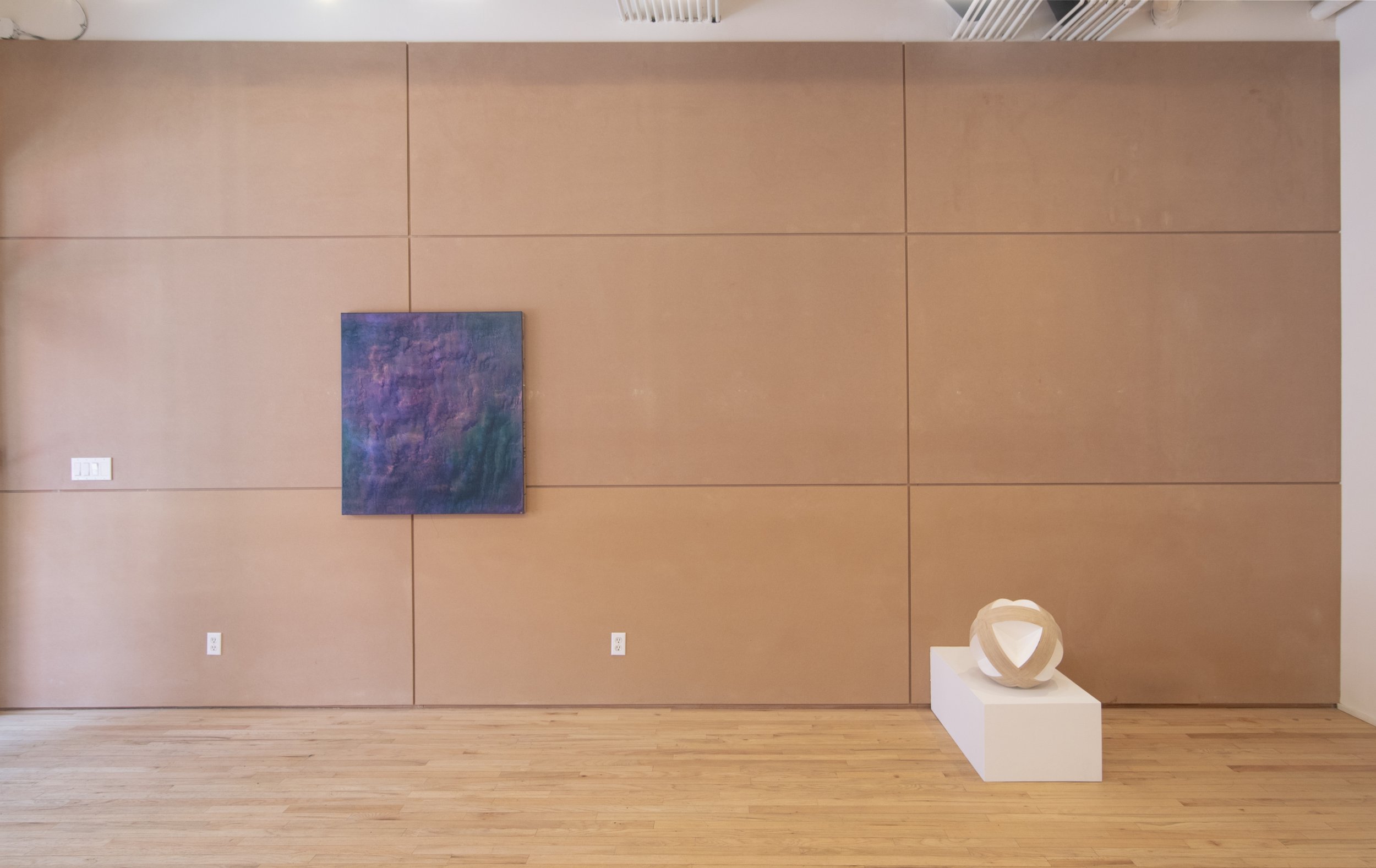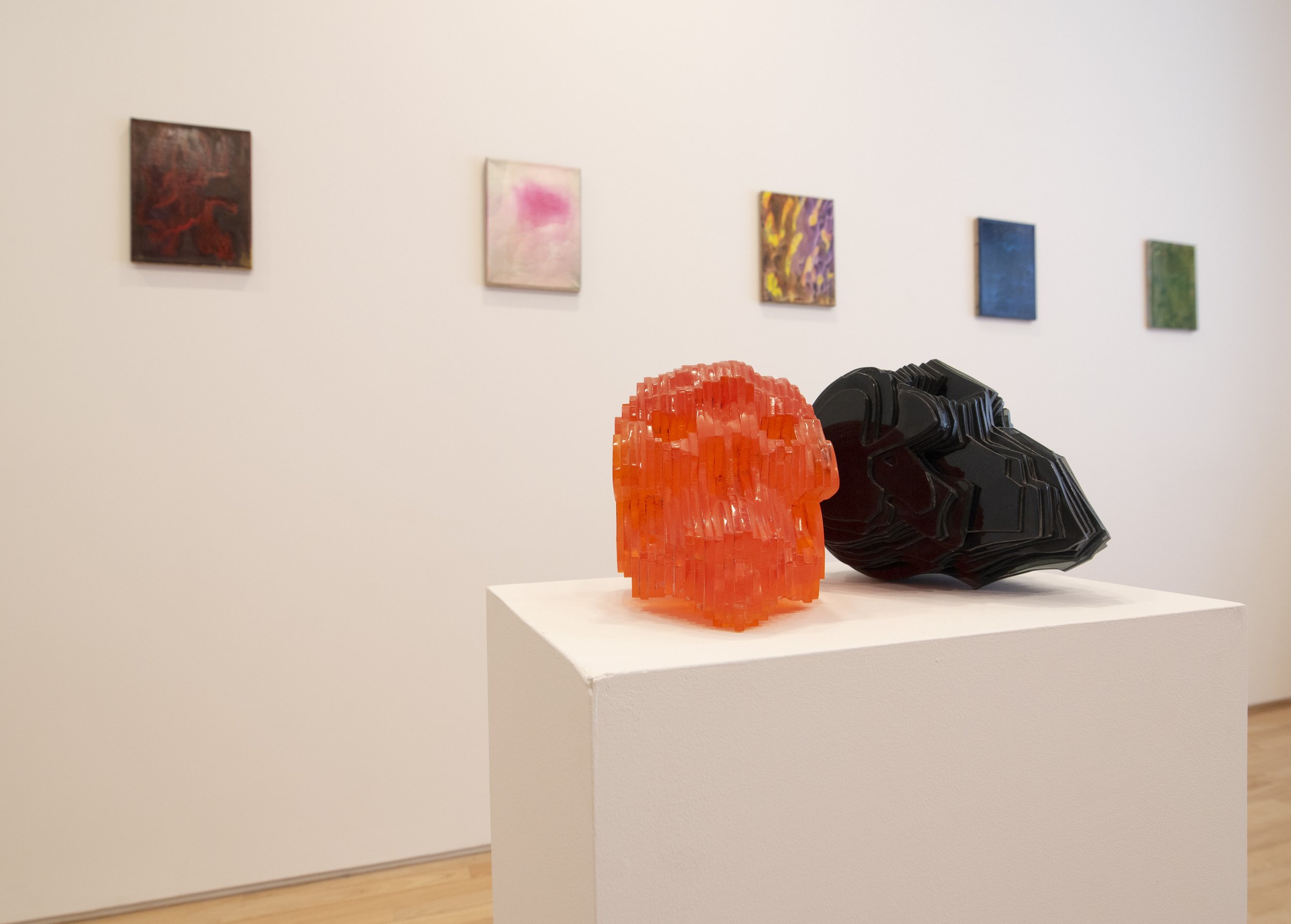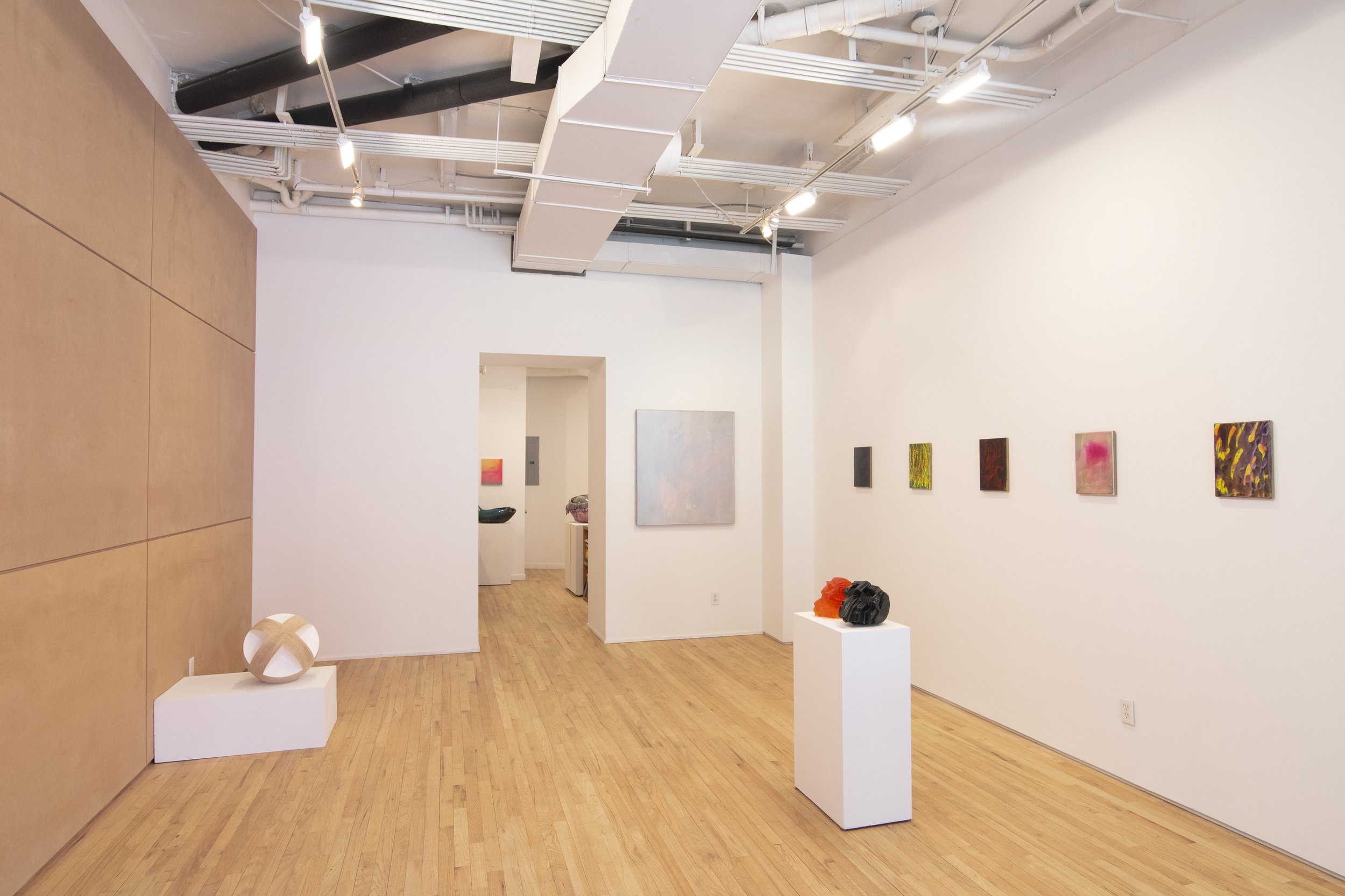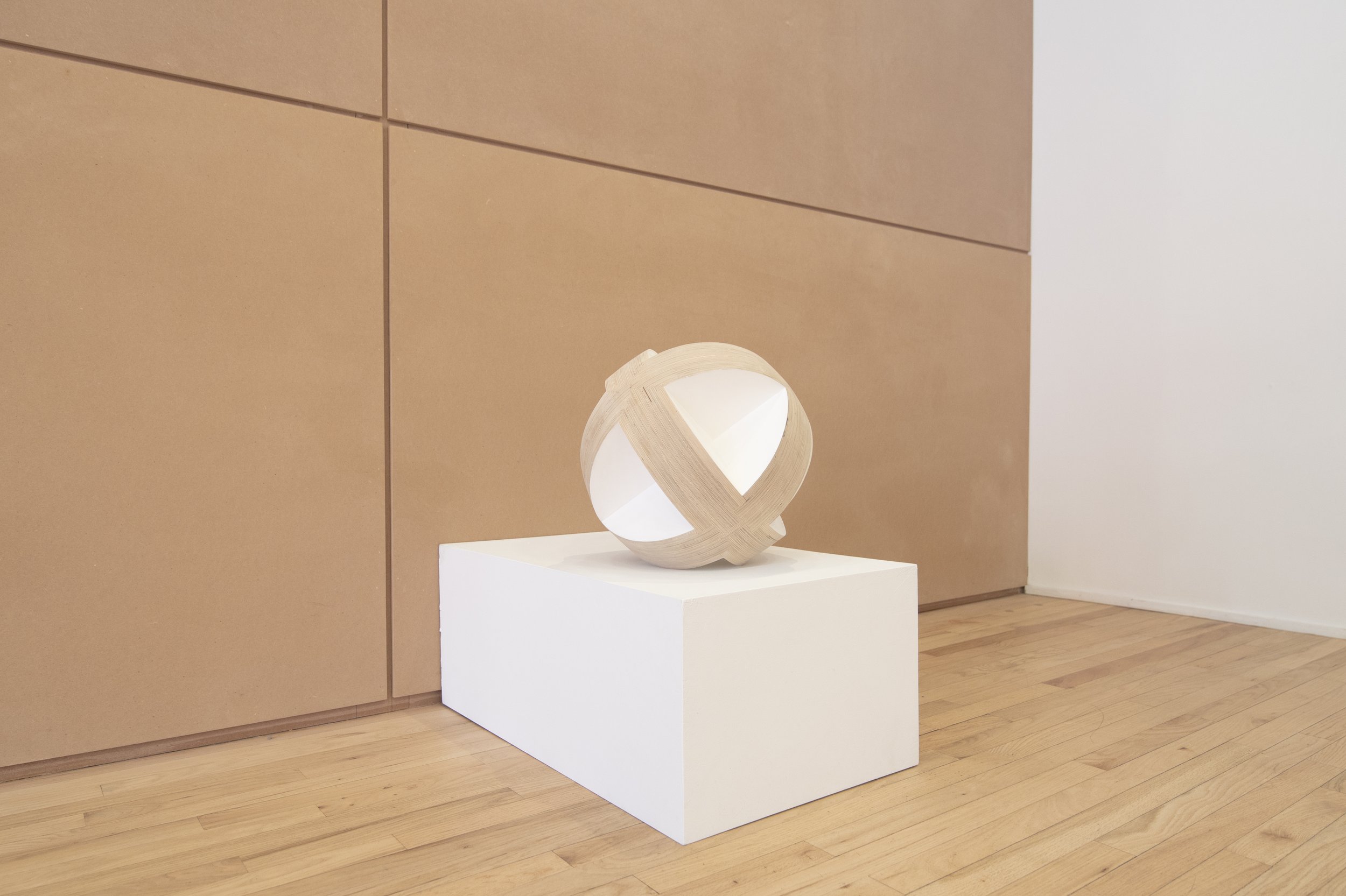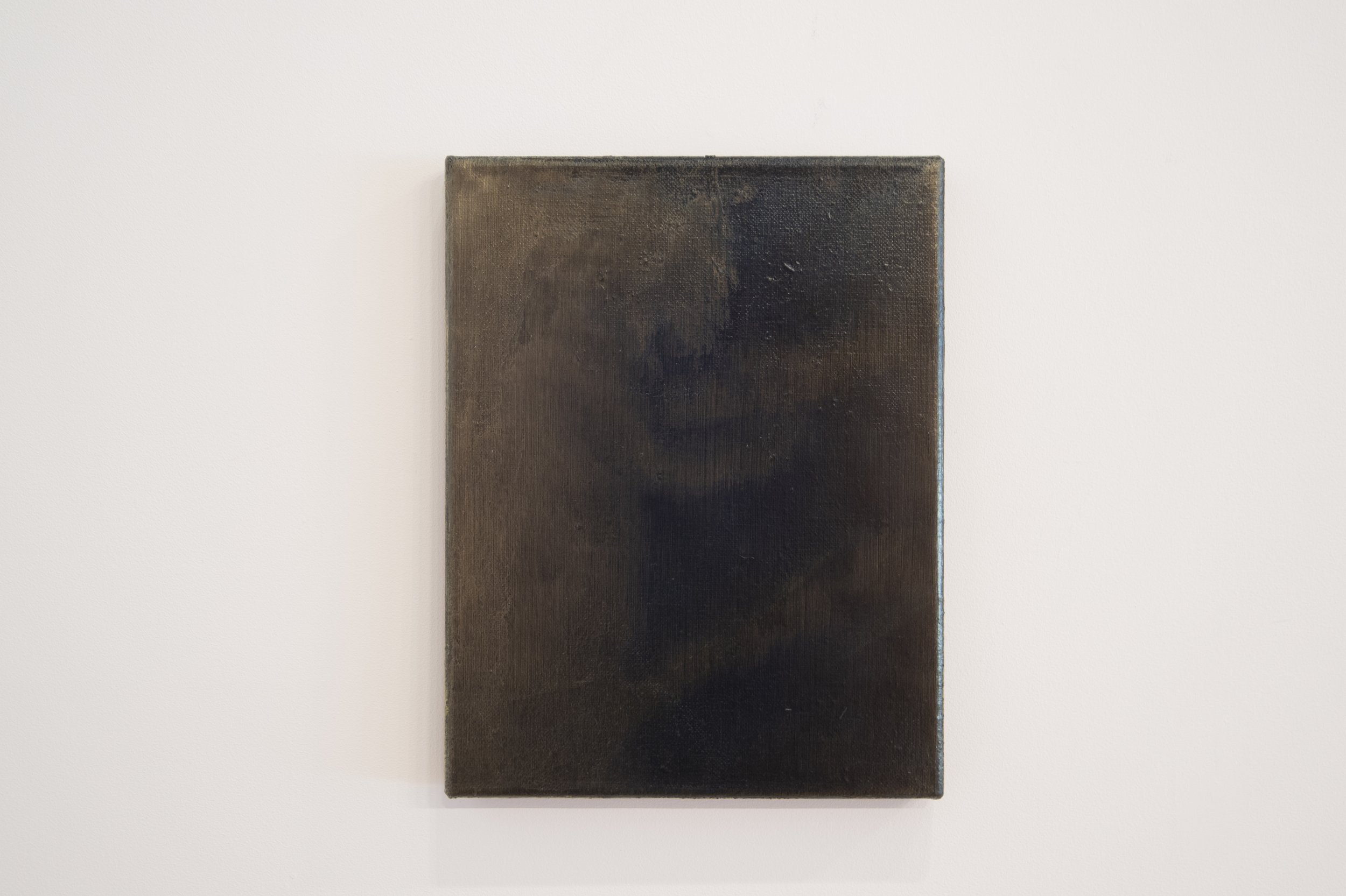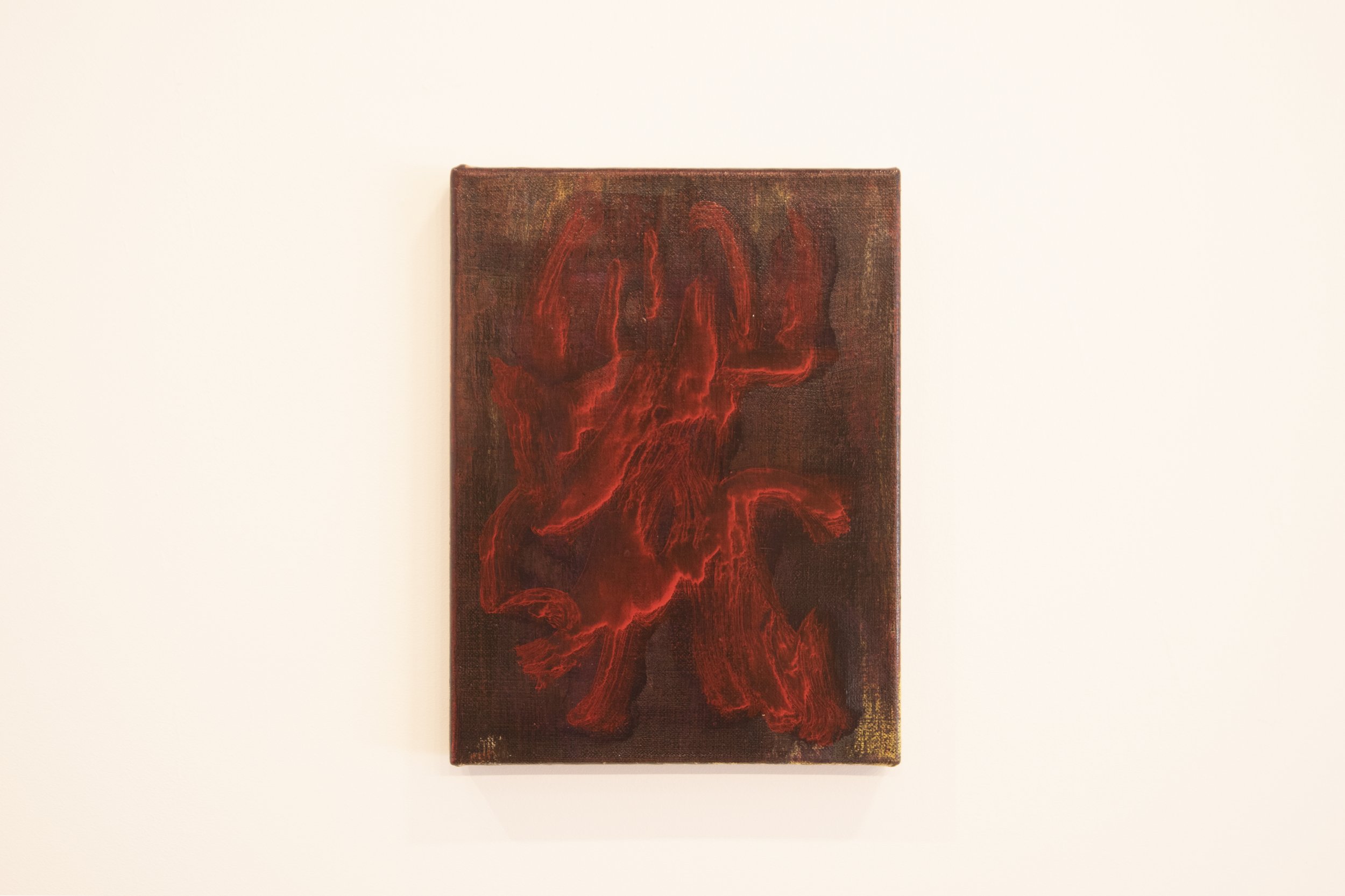What is sincerity? How can we connote it from an Instagram post? We could argue that we are living in an era rife with dualities, either/ors, and alternative facts. How can we reconcile what we know to be true, what we know to be false, and what we’re unsure about?
While modernism craved change and post-modernism raised an eyebrow, meta-modernism undulates between the state of certainty and uncertainty, naivety and knowingness, irony and sincerity. It’s an investigation into the gray areas of non-absolutes.
Charles Dunn’s (b. 1969, Ohio) sculptures explore geometric shapes and subcultural imagery in layers of wood, Plexiglas, and paint. Working 3-dimensionally, Dunn is free to showcase his ability to play with shape and light, to deconstruct and reconstruct, to engage his viewer from all angles. He creates forms with restricted movement; stacks of cut Plexi meld together to create a human skull with a neutral grimace and a translucency that is disarming. Meanwhile, his twin sculptures entitled “Christian Projectile” are confident structures that mirror each other in symmetry, yet in their Plexi and wood versions they battle for attention as your eye travels from one to the other.
Julius Linnenbrink (b. 1989, Herdecke, Germany) begins his paintings in what he calls the “abstract space or location of the mind.” Working quickly with acrylics, Linnenbrink allows himself the freedom to create his sweeping paintings with great focus and concentration on the piece itself, its color values and its composition. These seemingly quiet works are all about action, each movement of the artist’s hand is seen and felt. Building up the paintings in thin, sometimes undulating layers, Linnenbrink invites his viewer to enter into the depths of the spaces he creates. The “flow” in their creation reveals the artist's thought, action, reaction, time, and trust.

